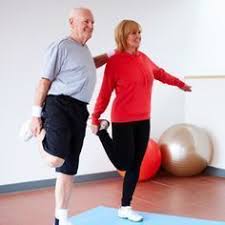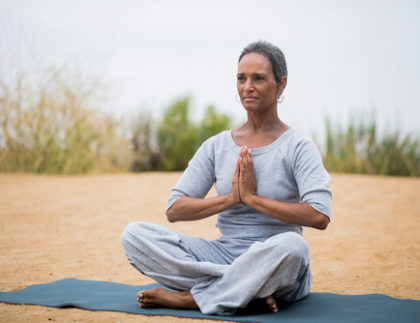
The principles of breathwork, or guided breathing, can be applied to any exercise or activity by consciously controlling the flow of air entering and exiting the body. In addition to the transformative effects that breath control can impart upon any specific training routine, it can also be taught as an isolated exercise with both meditative and restorative benefits.
I have outlined three specific types of breathing exercises, which I’ve learned and practiced over the past 10 years through my experience in the Russian Martial Arts. The physical mechanics of these exercises can appear quite simple, but the mental and emotional depth found within them can be as sophisticated as the participant permits. Remember, breathing is natural and fluid, and even when controlled it should not seem forced or irregular.
If you seem to lose your focus within the exercise and your breath becomes unnatural, you should stop immediately. Take a deep breath in through your nose and blow out quickly through pursed lips. Restore yourself, as often as required, and then continue as you feel able.
Ex. #1 - WAVE BREATHING - Stress Reduction

1 - Lie in a relaxed, supported position, preferably on the ground, and close your eyes
2 - Breathe IN gently through your nose, and out through your mouth (equal volumes)
3 - Gently contract the muscles of your feet with no more than 50% tension as you inhale, guiding the air into the lower body and relaxing everything else above the ankles
4 - Slowly relax the muscles of your feet as breathe OUT, returning your body to its baseline state
5 - On the next inhale, contract your feet again and then bring your breath and muscle contractions higher up the body to the knees, still making sure not to tense even 1% above these areas (especially in the face)
6 - Exhale and release the knees, and then follow with relaxing the feet completely
7 - You can sequentially move the breath up and down the body, as if you were lying on the beach and the tide was rising and receding beneath you
8 - Bring the breath flow and muscle contractions to a level no higher than your neck, always making sure to keep your face soft, pleasant-looking, and free from anxiety or tension
This is a fantastic exercise to be done at night after a long, stressful day of work or training. The key to your success with this lies in your ability to “specifically” isolate just the areas you are targeting with your breath, and completely relaxing everything else. There is a serene, almost meditative quality to this exercise that makes it appropriate for any person and condition.
Ex. #2 - STRETCHING YOUR BREATH - Walking Endurance

1 - Walk, strut, or stroll at a comfortable and even pace (eg. around the park)
2 - Breathe IN over 2 steps (ie. halfway at each step), then
3 - Breathe OUT over the next 2 steps (ie. 4 steps equals one breath cycle)
4 - When you are ready, progress your breath in over 3 steps (ie. one-third at each step), “stretching” it across a full, and even inhalation
5 - Breathe out over the next 3 steps (ie. 6 steps equals one breath cycle
6 - Eventually progress your inhale/exhale repetitions in a sequential manner to a target number that feels challenging, but not distressing
7 - When finished, restore yourself with deep, pursed breathing until you feel relaxed
This is a very challenging variation of breath training, because the purpose of the exercise is to gradually bring yourself to a self-imposed limit, which is inherently uncomfortable. The key to reaping benefit with this method of training is by making sure the volume of air breathed in and out is at even, smooth increments. The movement of air flow is not staccato, or step-like as if on a graph, but fluid, and sinusoidal. Do not make yourself distressed or panicked! The goal is to improve your lung capacity and regulate your sympathetic nervous system. Always restore yourself with recovery breathing until you feel relaxed and able to breathe in a normal manner again. You should feel tired, but also refreshed, and not exhausted.
Following an type of rigorous activity, your breathing may be rapid, and seem difficult to control. Use the next exercise to help yourself recover more calmly and efficiently.
Ex. #3 - PYRAMID BREATHING - Recovery

1 - Stretch your breath IN over a count of 2 seconds (ascending the pyramid)
2 - Stretch your breath OUT over a count of 2 seconds (descending the pyramid)
3 - Don’t breathe for a count of 2 seconds (base of the pyramid)
4 - Progress the count to 3 seconds as you see fit, until you feel restored
It is important to note that the concept of the “breath hold” is anathematized in Western Medicine, primarily because of potentially dangerous blood pressure fluctuations when practiced improperly. There are Eastern disciplines that can take breath holding to extremes, such that they only be undertaken with careful guidance and medical supervision. The restorative exercise of pyramidal breathing is not a “breath hold” exercise, and should by no means create tension, anxiety, or any blood pressure consequence. If, however, you have any personal concerns because of your medical history, you should definitely discuss them with your doctor first.
Much of what has been outlined here is by no means my singular invention, or the copyright of one particular person or school of thought. Rather it is a small, generalized, yet helpful introduction to the seemingly infinite world of breathing exercises found spotted across ancient cultures from around the globe. If you would like a further exploration of breathwork, you can investigate the Indian discipline of yoga, the Chinese tai chi, and the Russian martial art of systema. An excellent book titled, LET EVERY BREATH, by Vladimir Vasiliev, has been the foundation for my introduction to breath training, and may prove a good place for you to start too!










You must be logged in to post a comment.